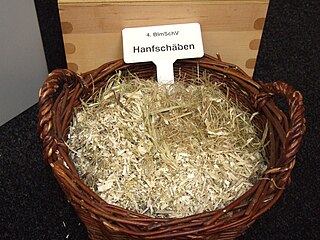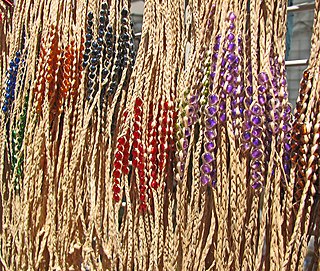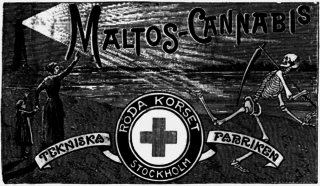 W
WHemp fiber, seed and oil can be used for a number of products.Food productsHemp juice Hemp milk Hemp protein Maltos-CannabisConstruction and materialsFiber reinforced plastic Hempcrete OakumMedicineCannabis (drug) CBG oil Medical cannabisRaw fiberHemp fiberFuelHemp oil can be used to make biodiesel Alcohol fuelOtherHemp hurds Hemp jewelry Paper Sleeves for tablet computers
 W
WHemp juice made from industrial hemp is a drug-free, non-psychoactive juice pressed with pressure from the Cannabis sativa plant. The juice is obtained through a large-scale industrial cold-pressing procedure using the upper parts of the hemp plant as well as the leaves. This procedure clearly distinguishes hemp juice from other hemp products such as hemp oil, hemp sprouts or hemp milk, which are solely obtained through the seeds of the hemp plant as opposed to the green hemp leaves used for the juice. The hemp juice production therefore makes use of a valuable part of the industrial hemp plant which has previously been neglected and not been used but instead been left on the fields to decompose. In particular, hemp juice offers a base for a variety of drug-free products in the areas of nutrition, medicine, cosmetics, and relaxing beverages. Moreover, its full-bodied umami flavor offers the ability to enhance dishes and drinks in their specific flavor, especially sweet or savory and harmonizes tastes overall.
 W
WHemp milk, or hemp seed milk, is a plant milk made from hemp seeds that are soaked and ground in water. The result resembles milk in colour, texture, and flavour. Hemp is conducive to being organically grown and labelled. Plain hemp milk may be additionally sweetened or flavoured.
 W
WHempcrete or hemplime is biocomposite material, a mixture of hemp hurds (shives) and lime, sand, or pozzolans, which is used as a material for construction and insulation. It is marketed under names like Hempcrete, Canobiote, Canosmose, Isochanvre and IsoHemp. Hempcrete is easier to work with than traditional lime mixes and acts as an insulator and moisture regulator. It lacks the brittleness of concrete and consequently does not need expansion joints. The result is a lightweight insulating material ideal for most climates as it combines insulation and thermal mass.
 W
WHemp jewelry uses hemp twine material which is made from the Cannabis sativa plant, otherwise known as “Common Hemp”, which is cultivated to make goods such as food, fuel, clothing and textiles, cosmetics, paints, paper, building materials, and plastics, among others. Some types of hemp jewelry include bracelets, necklaces, anklets, rings, watches, masks, purses, and other adornments. The jewelry can also make use of other materials, such as glass, wood, bones, rocks, or gems.
 W
WMaltos-Cannabis was a Swedish hemp seed-based malt beverage "food remedy" with sedative qualities produced beginning around the late 19th century into the early 20th century. The product was widely available in Sweden, Denmark, and Norway, and was advertised and reviewed in American publications. An 1899 pharmaceutical reference book printed in Philadelphia defined the product: "A Swedish nutrient in form of a yellowish-white powder, possessing a taste at first saline, later sweetish, and then acrid and bitter."
 W
WOakum is a preparation of tarred fibre used to seal gaps. Its main traditional applications were in shipbuilding, for caulking or packing the joints of timbers in wooden vessels and the deck planking of iron and steel ships; in plumbing, for sealing joints in cast iron pipe; and in log cabins for chinking. In ship caulking, it was forced into the seams using a hammer and a caulking iron, then sealed into place with hot pitch.
 W
WHemp oil is oil obtained by pressing hemp seeds. Cold pressed, unrefined hemp oil is dark to clear light green in color, with a nutty flavor. The darker the color, the grassier the flavour. It should not be confused with hash oil, a tetrahydrocannabinol-containing oil made from the Cannabis flower.
 W
WShives, also known as shoves, boon or hurd, are the wooden refuse removed during processing flax, hemp, or jute, as opposed to the fibres (tow). Shives consist of "the woody inner portion of the hemp stalk, broken into pieces and separated from the fiber in the processes of breaking and scutching" and "correspond to the shives in flax, but are coarser and usually softer in texture". Shives have traditionally been a by-product of fiber production.
 W
WThe soybean car was a concept car built with agricultural plastic. The New York Times in 1941 states the car body and fenders were made from a strong material derived from soy beans, wheat and corn. One article claims that they were made from a chemical formula that, among many other ingredients, included soy beans, wheat, hemp, flax and ramie; while the man who was instrumental in creating the car, Lowell E. Overly, claims it was "…soybean fiber in a phenolic resin with formaldehyde used in the impregnation". The body was lighter and therefore more fuel efficient than a normal metal body. It was made in Dearborn, Michigan and was introduced to public view on August 13, 1941. It was made, in part, as a hedge against the rationing of steel during World War II. It was designed to run on hemp fuel.